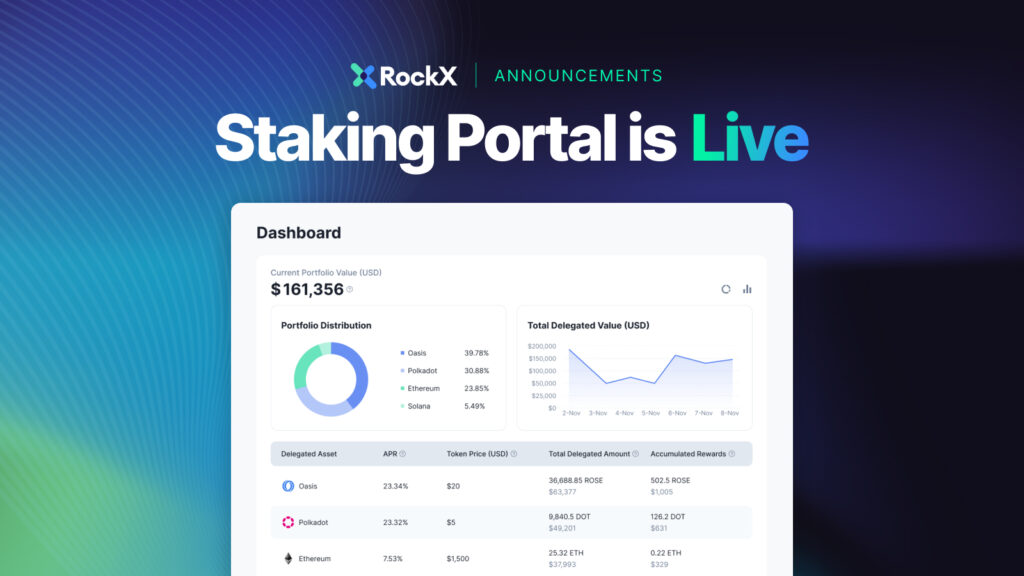If you ask any Ethereum adopters (or even, ‘supporters’, given the tribal nature of that crypto tech debates can take) they’ll all agree: 2022 was a revolutionary year for the second most popular token around.
Crucially, last summer saw the long-awaited ‘Merge’ event: the passage of rites taking Ethereum from its old energy-intensive Proof of Work mechanism to the green and efficient world of ETH 2.0 and Proof of Stake solutions.
This evolution wasn’t without controversy. Ethereum miners, which for several years had been the human backbone of this digital ledger and who stood to lose their livelihoods due to the change, went as far as attempting and announcing a failed coup – threatening to create an Ethereum fork and hold back its development as a form of blackmail.
Despite this, the wheels of innovation couldn’t be halted and the Merge did happen, bringing much of what it had promised but also some inevitable disappointment, as is bound to be the case with any event so hotly anticipated, for so long.
This deflated mood wasn’t just due to the very minor price action generated by the announcement. While many had indeed been anticipating massive gains off the back of such a monumental fundamentals change, this event was already priced into ETH’s valuation and had been for quite a while – in practice, the merge itself almost led to a ‘sell the news’ prevalent attitude. Furthermore, it would have been foolish to expect major upsides during what was already one of the most severe ‘crypto winters’ to fall upon the world of digital ledgers.
What left ETH maximalists and fans of the tech disappointed was a growing doubt: did the merge actually succeed in decentralising the currency further?
A Question of Coefficient

A relatively unknown indicator has been rising to prominence in industry conversation as a result of this doubt, and it’s giving traders and developers alike a lot of discussion points.
The ‘Nakamoto Coefficient’ was first proposed by investor Balaji Srinivasan and by software engineer Leland Lee in a piece published on Earn.com called ‘Quantifying Decentralisation’, and named as such in an homage to the mysterious Satoshi Nakamoto, considered the father of crypto.
As the title suggests, the article focused on ‘decentralisation’ as the primary value assigned to cryptocurrencies such as BTC and ETH, and therefore identified it as the prime indicator of how successful in its purpose a coin could be.
In the piece, the pair aimed at defining a methodology to quantify the decentralisation factor of each coin, and therefore infer what its breaking point would be: the factor that would make an entire network lose its independence completely.
This methodology highlighted a key but overlooked notion: while a Proof of Work system was inefficient and energy-intensive, it required at least 51% of network validators to be corrupt or bad actors in order to be vulnerable to an attack.
The nimble and eco-friendly Proof of Stake protocol, however, became weak and controllable with just over 33% of its validators breaking bad. Someone in this position could completely sabotage the currency, leading to phenomena such as double spends and, eventually, a complete collapse of value.
The coefficient is designed to take into account the whole ‘support network’ of a project, which means taking a look at how code developers, users and wallet dynamics would impact an attack attempt, not just validators – yet their assessment remains unchanged.
Too Big To Fail?

Yes, you’ve heard this one before – a movie about the 2008 financial collapse is ironically named precisely like the section of this article you’re about to read. And it’s very much ingrained in popular culture that making big claims about the infallibility of one’s endeavours tends to propel the speaker to the ‘famous last words’ realm.
Yet that’s sort of the angle taken by the researchers at the Ethereum Foundation to dismiss some of the concerns raised by Lee and Srinivasan. Alex Stokes spoke to Bloomberg back in autumn and defined the 34% attack as a ‘worst case scenario’, claiming the network’s users are too many, too diversified, and too geographically distant for such a malignant alliance to ever be formed.
He also suggested that the risk of losing coins would be a major factor putting off people from being tempted to put forward such an attack, perhaps confident the dollar value of ETH would remain stable enough even during a profound crisis such as an attempted coup. Based on these notions, Stokes would put Ethereum’s vulnerability at a much higher percentage of compromised actors – 66% at least.
Lee disagreed with conviction, especially when looking at the current industry landscape, which sees the validator addresses of Lido and Coinbase control over 43% of all validator pools. Despite the ‘user-centric’ way those pools are managed on platforms like Coinbase, it’s undeniable this represents an increase in centralisation rather than the way around.
Staying Secure, Avoiding Security

This move further away from the ideological mecca of a decentralised digital ledger has not just attracted the attention of disgruntled crypto believers who follow the ethos of the aforementioned pioneers like Satoshi. It also turned heads at SEC, the Securities and Exchange Commissions which regulates the US financial market.
A big part of the attractive crypto has relies on its status of a ‘paramarket’ which runs with very little regulation alongside the traditional world of controlled and state-sanctioned stock trading.
What has allowed this market to flourish like so is the decentralisation inherent to most PoW cryptocurrencies – but that could change quickly in a world dominated by staking.
A tightening of regulation at a time where crypto isn’t undergoing the most positive market sentiment is seen by many crypto sceptics as a potential death blow, and it’s hard to imagine it would please its most ardent supporters either.
Infrastructural Issues

It’s not just a matter of who controls the coins, but also of where they are held and controlled. And then news there isn’t particularly rosy either.
In fact, as of a couple months after the London merge, analysis indicated that the physical location of most ETH nodes is less diversified than ever.
65% of all nodes are hosted in data centres, and a staggering 50% of them are all on Amazon Web Services (AWS) platforms. This is particularly concerning as it represents a single, centralised point of failure where an outage could take close to half the network offline.
The rest of the market isn’t particularly independent and spread out either: the second biggest provider, Hetzner, sits at 10.58% and Google Cloud and Oracle combine for another rough 10%.
A Harsh Reality

As much as the spirit and ideology behind Ethereum’s 2.0 switch were in line with the premises of a future in which cryptocurrencies rely less on energy consumption and institutional backing, the results speak of a very different landscape.
A PoS switch was inevitable in principle and on a planet which is running out of energy resources and witnessing a crazy surge in utilities pricing, but it seems quite clear that the Merge is just a starting point for a journey to decentralisation.
And for now, the first few steps of that journey have been backwards.
Support Ethereum’s Decentralisation Through Staking

RockX recently launched a staking portal to make it easier to track your staking delegations and rewards, and manage your staked assets at the same time. For those who believe in the future of Ethereum and want to contribute to the network, they can do so by staking. Staking allows ETH token holders to earn yield on their ETH assets while contributing to the network by further decentralising it. RockX’s enterprise-grade staking portal allows users to do so with ease and peace of mind.









